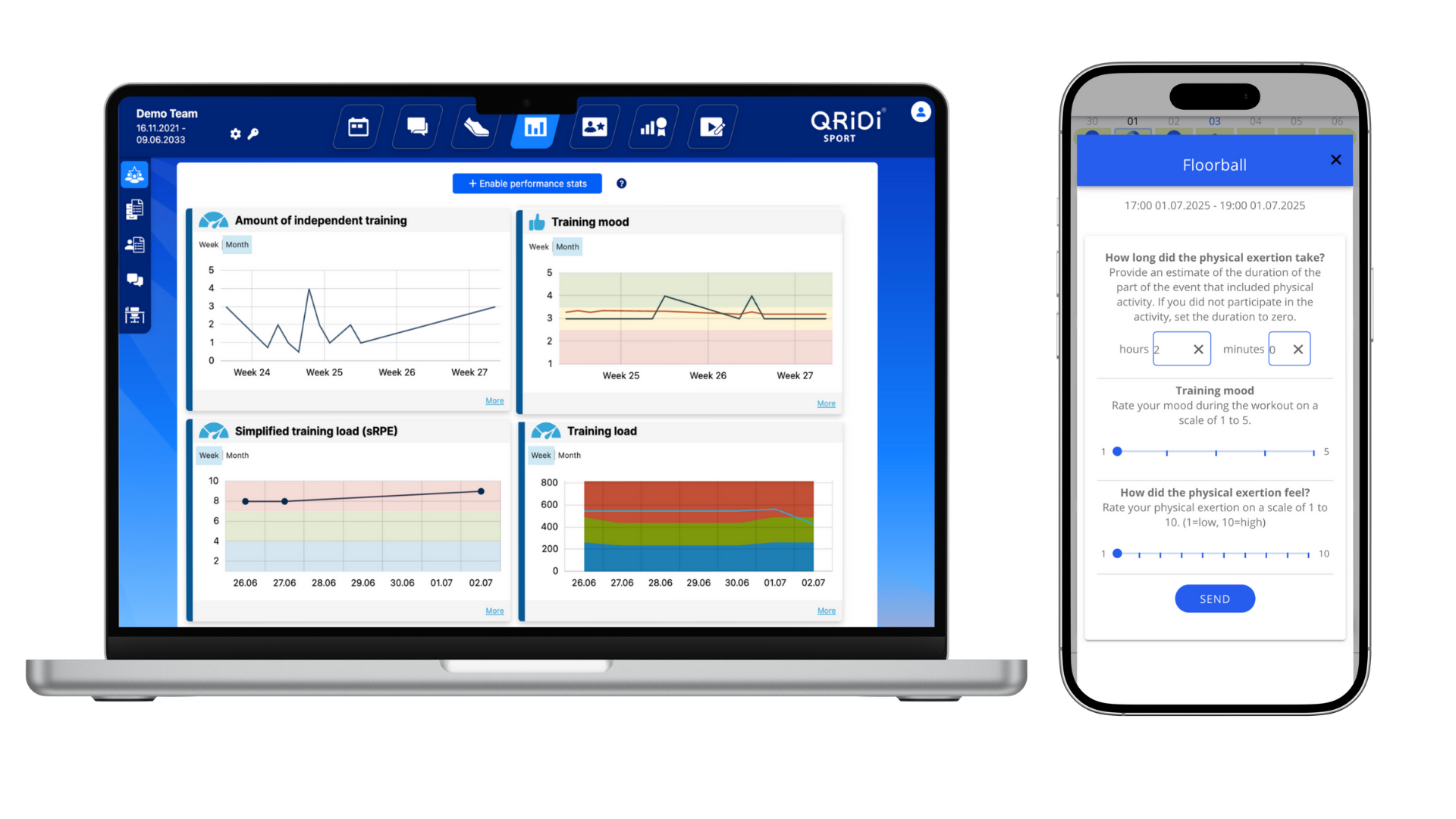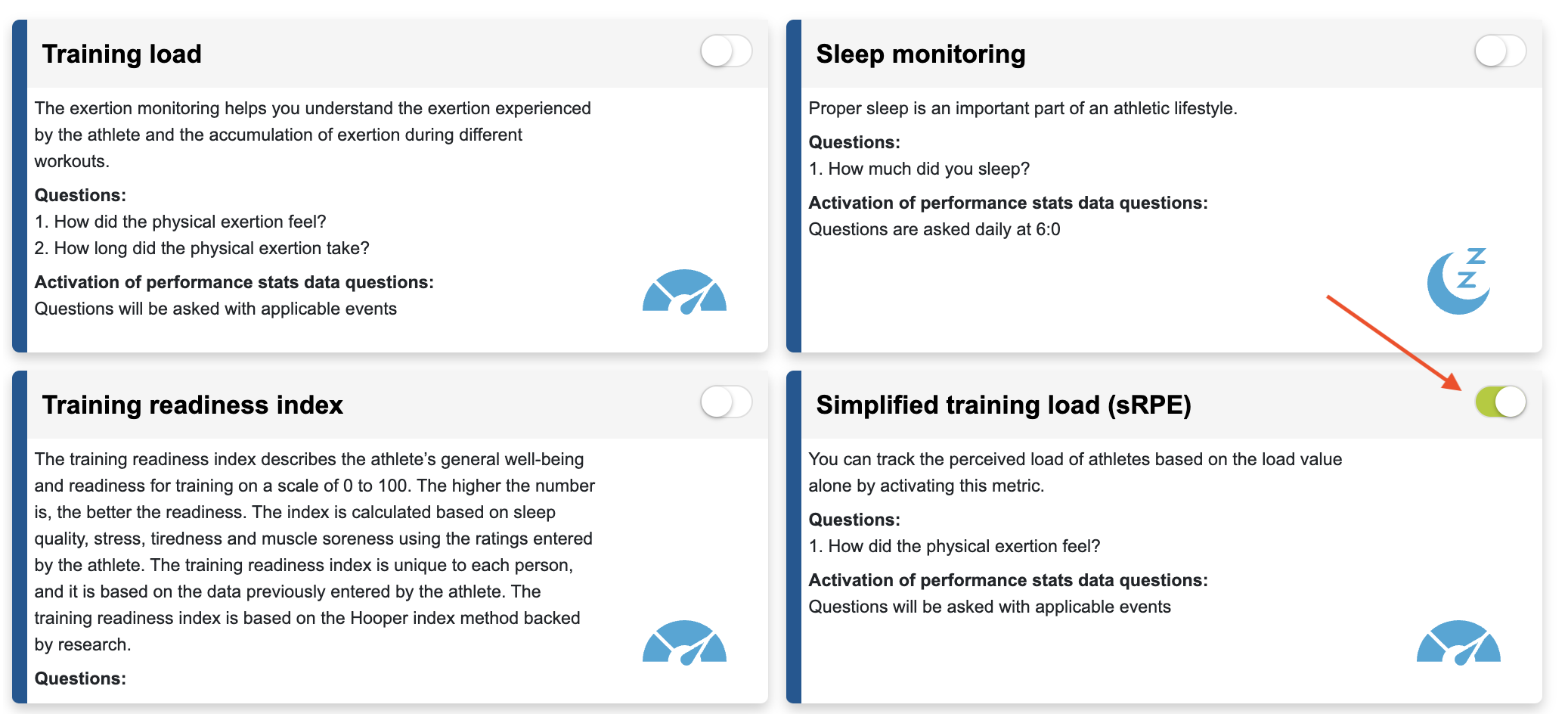Performance stats (e.g. training load)
The Performance Stats is a versatile tool for monitoring the metrics that are essential for an athlete's overall development. You can easily enable data collection from the meters you want. For athletes, the performance stats data queries appear in their own application after activation. If they are related to events (e.g. exercises), they are always activated and reminded after the event.
You can monitor the accumulated data on performance stats page. By clicking "Open" at the bottom right of the graph, you can view more detailed information from the desired time interval and also per athlete. Measurement data can also be monitored using the coach’s mobile app.

How to activate?
From the top menu of your team view, select “Performance Stats”, then choose “Performance Stats”. You will see a list of available options, and you can easily activate the desired metric by clicking its toggle button.


More information about certain measurement data
If you only want to track the athlete’s perceived exertion level (sRPE), you can use the “Simple Load Monitoring (sRPE)” measurement type.
With load monitoring, both the coach and the athlete can follow the athlete’s training load. The load is calculated by asking the athlete to rate the intensity of the session on a scale from 1 to 10 and by considering the duration of the session. As a coach, you can predefine the active duration when creating the event.
In the load monitoring graph, background colors represent the athlete’s previous training history, and the line shows the load over the past week. The averages are calculated by including rest days—days with no recorded values—so, for example, a weekly average is not the average of recorded loads but the total load divided by seven days.
In the table view, the background color is based on the athlete’s personal average from the past four weeks. The idea is that if an athlete trains significantly more than during the previous period, the risk of overtraining and injury increases. Conversely, if the training volume is much lower than before, progress may stall.
For load monitoring to work effectively, the athlete must enter a value for every training session. Ideally, they should also log any self-directed or non-Qridi training sessions as events, so their load can be included in the calculations.
The Readiness Index is calculated based on responses to four questions (listed below). Answers are given on a scale from 1 to 7, and an index value is calculated based on these four responses. This index is displayed in the measurement reports. A score of 100 means the athlete feels fully recovered in all areas, while a score of 0 indicates the athlete feels not recovered at all.
